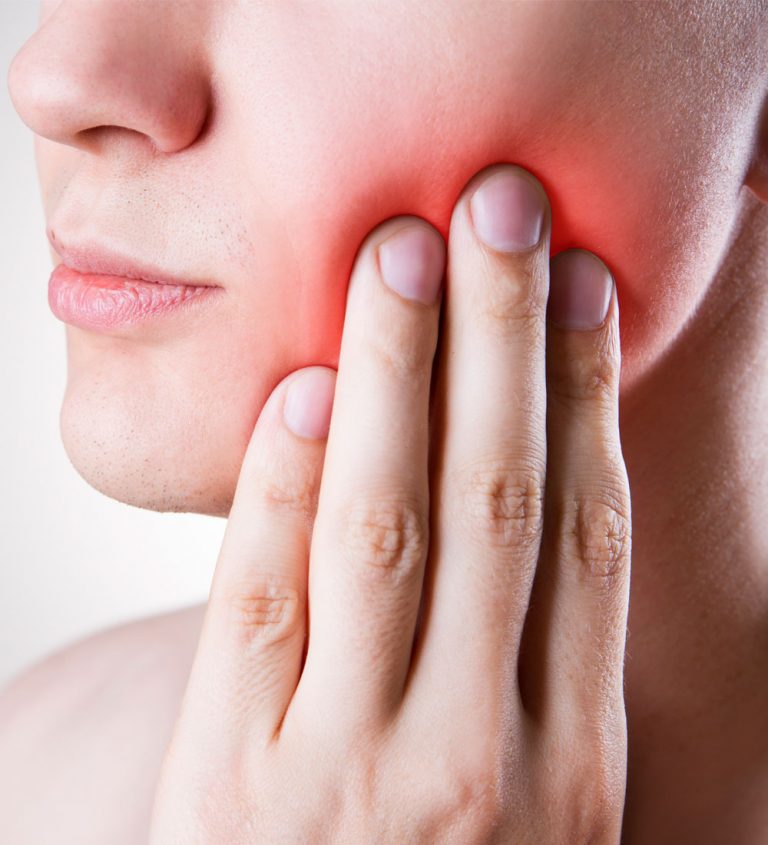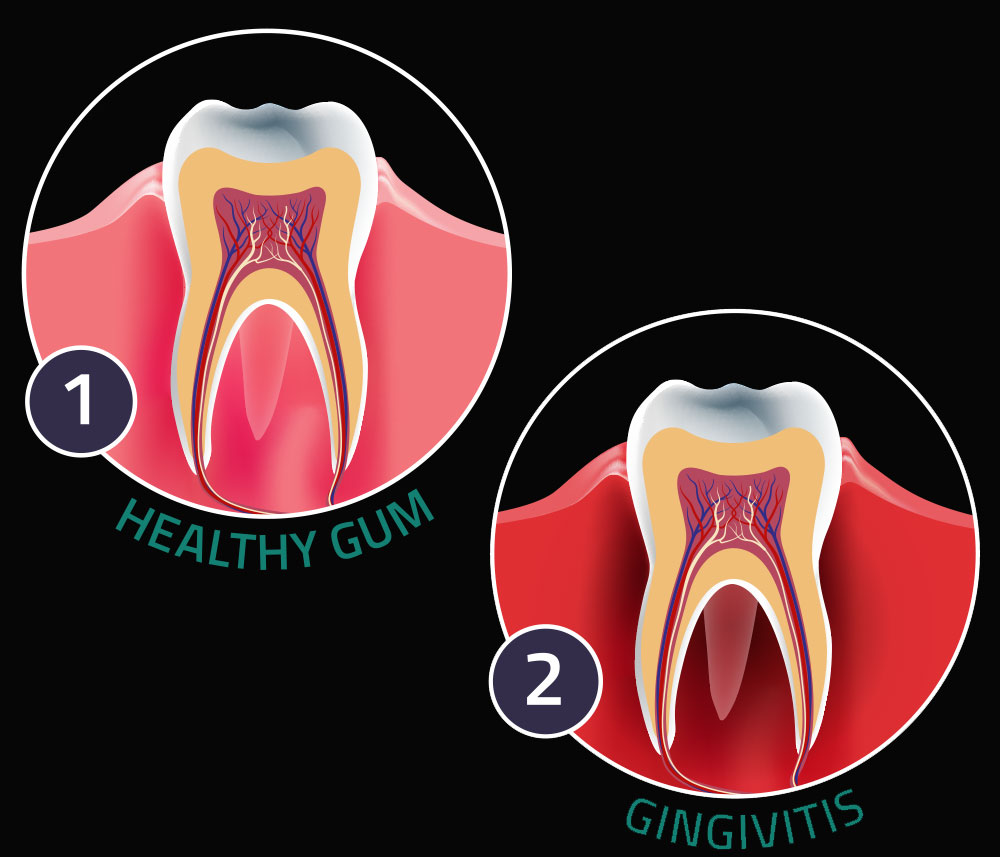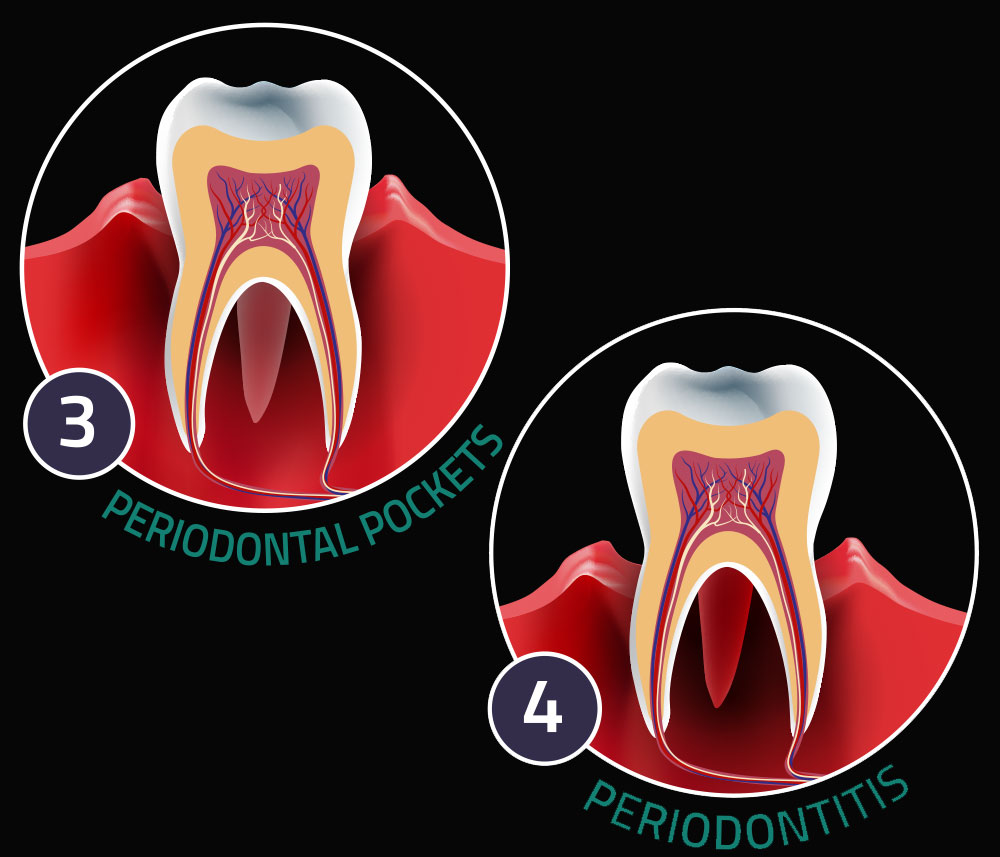Periodontics
Swollen, painful and bleeding gums: these are all tell-tale signs of periodontal (gum) disease.
Other symptoms include bad breath and loose or sensitive teeth. Unfortunately, it’s very common and usually you aren’t aware until the condition is in the later stages of the disease.
Periodontal disease starts with gingivitis, a mild form of the condition. If you catch it and treat it, it’s much easier to restore the health of your teeth and gums. But often, it is left untreated. As the condition progresses, the soft tissue and bone that supports the teeth is destroyed and tooth loss may occur. It’s critical that you have regular check ups to ensure periodontal disease is caught in the early stages and prompt effective treatment is received.
If you’ve been diagnosed with a periodontal disease, it’s important to understand the seriousness of the condition. Ongoing, committed treatment is necessary in order to manage the disease. Dr. Perlus is a periodontist specializing in the diagnosis, treatment and prevention of gum disease. He will evaluate and recommend the best treatment for your periodontal condition. It will require a combination of office treatment, possible surgical procedures and home care to prevent the disease from getting worse or returning.


The Stages of Periodontal Disease
Gingivitis: When plaque and bacteria grows out of control and isn’t removed, toxins are produced and gums become infected. As calculus (tartar) along the gum line accumulates, it causes more irritation and swelling. Gums are sore and bleeding and bad breath occurs, but at this stage, no bone is damaged and the condition is reversible.
Periodontitis: As the condition progresses, plaque and calculus may be found below the gum line, gums become irritated and bright red and bleed easily. The gums begin to detach and pull away from the teeth, allowing more bacteria in fill the pockets. As damage continues, loose teeth result.
Advanced Periodontitis: When periodontitis progresses to the advanced stage, pockets deepen and may fill with pus. There may be swelling around the root, and sensitivity to hot or cold may occur. It may also be painful when teeth are being brushed. Bone loss increases and teeth become loose and fall out or need to be removed in an effort to restore the overall health of the mouth.
Steps to Treatment
Once your dentist or doctor has detected periodontal disease, a more in-depth examination is performed in our office to determine the extent of the disease. We take your medical history, dental history, advise you regarding your condition and discuss your treatment plan.
Certain medical conditions and lifestyle habits can promote periodontal disease so a full medical history is important in your treatment. Also, excellent home care for your teeth is key to your periodontal therapy and the prevention of further damage.
A thorough periodontal examination is performed to evaluate the extent of the periodontal disease: the gums are inspected for swelling, bleeding and other abnormalities. Teeth are checked for movement and sensitivity and roots are carefully examined. The bite is checked and x-rays determine the condition of the bones. Periodontal probing is used to measure the depth of the pockets around each tooth.
From there, a treatment plan is developed. It may include removal of teeth, gum surgery, non-surgical procedures and home care.


Surgery
There are surgical treatments for more advanced periodontal disease, including flap surgery to eliminate infection and reduce pockets, gingivectomy to remove overgrowth of gum tissue, bone surgery to smooth craters in the bone, guided tissue regeneration and gum tissue and bone grafts. If surgery is required, local anesthesia will be given. Any incisions will be closed with sutures and a protective dressing may be applied. Patients are sent home with pain medication and possibly antibiotics. Follow all instructions for care for the days following your procedure as outlined in your post-operative instruction sheet
Non-Surgical Treatments
These include scaling to remove plaque and calculus below the gum line, root planing to reduce contaminated exposed root surfaces, antibiotic therapy for active infection, a bite guard to correct imbalances in the bite and splinting of loose teeth. Ongoing care includes proper education about flossing, brushing and special dental aids, and lifestyle risks.
General Health & Periodontal Disease: The mouth-body connection
There is good evidence about an association between periodontal disease and pregnancy, respiratory disease, diabetes and heart disease. There also appears to be a relationship between periodontal disease and hormonal changes such as those in menopause. There is also increasing evidence for periodontal disease and systemic diseases, the common factor being chronic inflammation.
